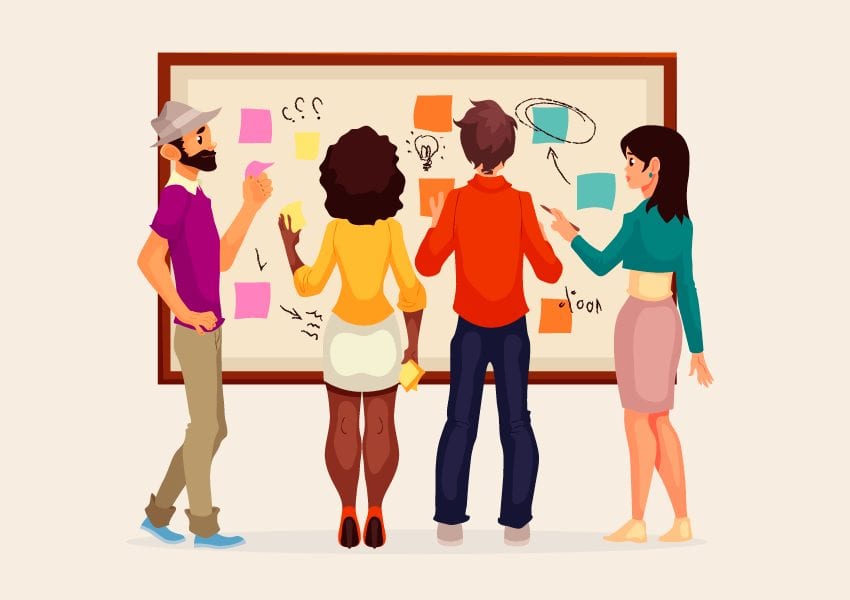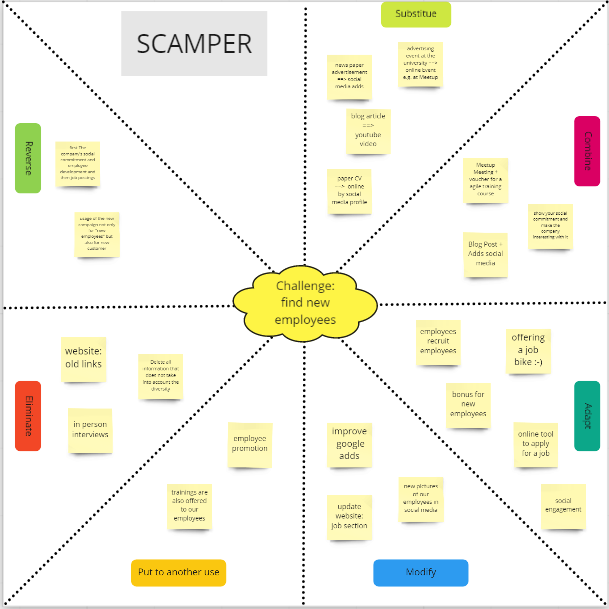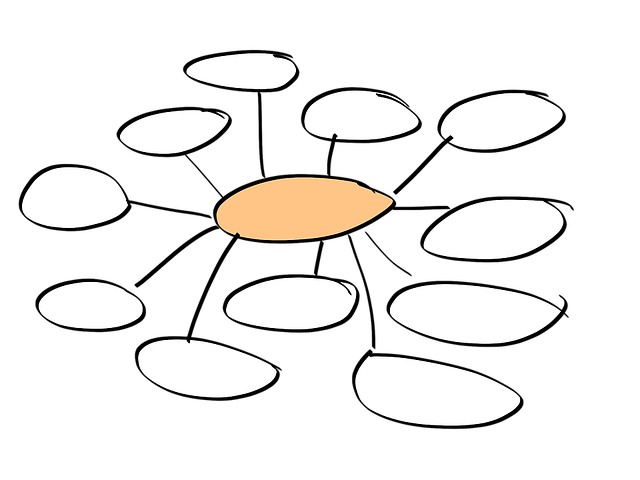These exercises are designed for innovative workshops and sessions.
Thinking outside the box and generating fresh ideas is invaluable. But sometimes, even the most brilliant minds can hit a creative block. That’s where innovation exercises come in. These fun, effective, and engaging activities are designed to break mental barriers, spark creativity, and foster new ways of thinking. We’ve helped organizations across the world go beyond what they thought was possible by using some of these techniques! From brainstorming techniques to design challenges, these exercises will help you think differently, solve problems in new ways, and build a culture of innovation. Consider adding these to your innovation practice.
1. Design thinking
Design thinking is a problem-solving approach that puts the user at the center of the design process. The process includes hands-on collaboration in the form of prototyping and testing. It’s a human-centered approach to innovation. There are many design thinking exercises and activities. The ones you find below can be utilized at many stages of the design thinking journey.
Learn more about design thinking in this guide.
2. Lean startup method
Lean Startup is another source of many activities and exercises in a customer-focused approach to innovation. In the same wheelhouse as design thinking (and agile), a lean startup approach offers a way to quickly ideate, test, and create prototypes. Companies will develop a minimally viable product that is a stripped-down, basic prototype of their idea so they can easily get actionable feedback before developing the more advanced, costly version of the solution. Frameworks like design thinking, lean startups, and agile offer a whole “collection” of innovation activities or exercises. See below for some of the most popular.
3. Brainstorming
Brainstorming is a classic innovation exercise that involves a group of people coming together to generate new ideas. Participants are encouraged to share their thoughts freely, build on each other’s ideas, and challenge assumptions. There are also structured brainstorming models, such as reverse brainstorming and Round Robin.

4. SCAMPER
SCAMPER is an acronym that stands for “substitute, combine, adapt, modify, put to another use, eliminate, and reverse”. Each of these refers to a specific technique that combines to create a really effective innovation exercise.

5. Mind mapping
Mind mapping is a visual tool that helps individuals organize and explore their ideas. It involves creating a diagram that shows the relationships between different ideas and can be used to generate new ideas or to plan projects. Mind mapping is a simple and effective way to spur creativity and encourage new ways of thinking.

6. Prototyping
Prototyping involves creating a rough model or simulation of a proposed solution, which can then be used to gather feedback and insights from users and stakeholders. Essentially, it’s a cost-effective way to test possible ideas without committing to the actual development cycle. Prototypes can be as simple as paper drawings, or more complex like Adobe InDesign creations.
7. Creative problem solving
Creative problem solving, in its simplest form, relies on four steps: clarify (defining the objective and facts), ideation (brainstorming), developing (turning ideas into experiments), and implementation (creating a plan and moving forward). Rephrasing, suspending judgment, and looking at problems from different angles are all crucial in CPS.
Learn about creative problem solving workshops on our blog.
8. SWOT analysis
SWOT is a simple innovation exercise where you list out strengths, weaknesses, opportunities, and threats (challenges) in a grid-like pattern. It’s a great intro exercise to understand the problem before getting started with some of the other activities.
9. Customer journey mapping
Customer journey maps visually showcase the customer’s experience: from initial contact with your service/product throughout their engagement and relationship. This exercise is useful for user research and persona creation.
10. Empathy mapping
Empathy maps are visualizations of everything you know about your end-user through interviews, observations, and other sources. You’ll often find the insights broken out in different grids such as “say”, “think”, “do”, and “feel”.
Innovation Exercises Conclusion
We’ve helped organizations and individuals all over the world learn how to overcome challenges and innovate using many of these popular innovation exercises from our innovation practice. There are many more that we like to use in our innovation programs. Contact us today if you’d like help creating a unique innovation workshop or conference.
